

Author: Kent Moors, Ph.D.
There have been some developments on three fronts related to the ongoing “Spy Tales’ series. Each of these is intended to allow my writing about areas previously considered off limits. I am for the first time optimistic that at least some of this will see the light of day. But it remains a slow process.
Meanwhile, we move on with this week’s installment.
On at least four occasions that I can recall my intel experiences dovetailed into dark local customs or beliefs. Three of these were occasioned – at least in the beginning – by an undertaking of mine or issued from an ongoing operation. One of these I have already discussed (“A Death on Copinsay,” January 20, 2021).
What follows is the instance initiated by the other side. I still regard this as one of their more “creative” efforts. It showed some initiative and facility with indigenous beliefs (and fears), as well as an understanding that weaving a narrative takes some thought and design. Neither an ability to morph with the background or roll out a mission environment that exhibited facility with the locals was ever their strong suit.
I admit before we start that the tale has no earth-shattering ramifications, but remains a great story, nonetheless.
As usual, some necessary background at the outset, a little longer than usual this time around.
The first Welsh devolution referendum occurred forty-two years ago Monday (March 1, 1979). It was held on the same day as a similar Scottish initiative. The vote was on whether to accept a representative assembly empowered with some secondary authorities for both Wales and Scotland. The four constituent parts of the United Kingdom (the other two being England and Northern Ireland) had decisions made for them by the Parliament sitting in London (at Westminster). This would be the first attempt to grant some of the initiative to new bodies closer to the populations.
Both would overwhelmingly fail.
Eventually, after several attempts, later versions in 1997 would succeed in establishing the National Assembly of Wales (Senedd Cymru) sitting in Cardiff and the Scottish Parliament in Edinburgh.
A similar devolution referendum ended the “time of troubles” in Northern Ireland with ratification of the Belfast (“Good Friday”) Agreement in 1998. Here, a devolved Northern Ireland Assembly convenes in Belfast (although it has been suspended several times since 1999 due to a collapse in the power sharing accord between the main Protestant and Catholic political factions).
The 1979 versions, on the other hand, were disasters from day one. Fulfilling a campaign pledge, the Labour Party and its thin parliamentary coalition rushed forward the devolution initiatives despite clear signals that there was little appetite on the ground.
The fear has always been that local nationalistic fervor in both Wales and Scotland would push further to a demand for independence from London. That became even more the case in Scotland, where an independence movement was always stronger, especially after revenues from North Sea oil began flowing south to London rather than staying up north.
In Wales, there had been periodic indications of differences between the traditional ethnic Welsh counties in the north and the southern areas populated more heavily by waves of “immigrants” from England arriving in the eighteenth century. The bilingual signs mandated throughout Wales are a contemporary illustration of that continuing division.
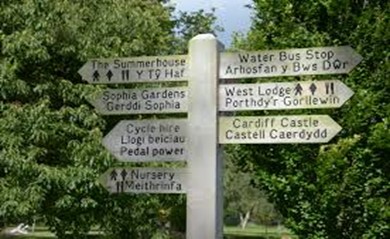

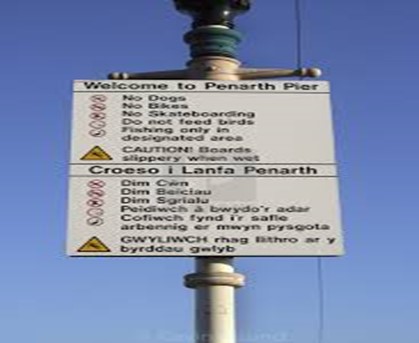

In 1979, few in Wales felt strongly about devolution. That was compounded by the way in which the voting requirements were stacked against a win (the entire vote in favor of devolution would have to constitute at least 40 percent of the total number of registered voters). In addition, the unpopularity of the government in London at the time (a period dubbed “the winter of discontent”) did not bode well either.
It sank in Wales, with less than 21 percent voting in favor. The measure in Scotland passed but generated a vote equal to only 32.5 percent of all registrants.
The votes were the veritable final straws for James Callaghan’s beleaguered minority Labour government. The Scottish National Party (SNP) withdrew support, as did much of the Welsh nationalist party (Plaid Cymru). The government lost a March 28 parliamentary motion of no confidence by a margin of one vote. That was followed by the crushing Conservative victory in the May general election that brought in Margaret Thatcher as Prime Minister. Labour would be out of power for the next eighteen years.
Yet, during all of this, something else was taking place. What ensued during the period leading up to and after the Welsh dissolution referendum was almost a textbook example of how active measures would be used to spread unrest, disagreement, and internal discord.
In 1979, we had no computer bots or social media platforms to provide vehicles for misinformation. D&D (denial and deception) was played the old-fashioned way. Nonetheless, then and now, it remains all about making the target accept as true what has been manufactured by somebody else for some other purpose.
Over years, the KGB had been feeding folks in Wales and Scotland a steady diet of leaked stories and manufactured dribble meant to reduce allegiance to the government in London. Now this was hardly some crackpot scheme to begin an insurrection. After all, aside from the Irish, Brits had not done revolution for more than three centuries. Rather, this was merely the latest attempt to weaken an adversary domestically by driving wedges between the center and ethnic regions.
Nobody, including the Russians, thought either 1979 devolution bill would succeed. Rather, their approach was a longer play to seed discontent among the Welsh and Scotts to be used later for other purposes as the opportunities arose. They were at the same time using cutouts and front groups to generate support for both sides in the Northern Ireland mess.
In all of these places, they did not care who won. In fact, a stalemate was even better as it fomented bad feelings and the possibility of domestic discord.
The objective was not to topple a government or see to it that one side won. Keeping the unrest and disagreement percolating served to undermine credibility and popular political support. And that was the operational goal. As such, a simmering stalemate would be just fine.
Hardly a new thing. We had been fomenting unrest among ethnic groups inside the USSR for some time. The UK wartime union government in London had even established a Russia Committee by 1944 – over a year before World War II ended – to begin making plans for the next conflict.
Stalin’s paranoia about the West coming to get him was not entirely fictitious.
The Security Service (MI5), the UK’s internal intel organization, had successfully rolled up the wartime networks of the NKGB (the KGB predecessor agency at the time) by 1945, turning many into doubles feeding misinformation back to Moscow. All of this was going on while the USSR, the UK, and the US were supposedly allies fighting a common cause against the Axis.
Later in the 1950s, the Cambridge Five (Kim Philby, Guy Burgess, Donald Maclean, Anthony Blunt, John Cairncross) and later the even more destructive George Blake would tear apart the British intelligence and foreign service apparatus from the inside.
But even with moles and fellow travelers, the fifth column never took hold.
By the time I was playing the “great game” from an academic cover base in London, the KGB (as the Soviet state security would be called from 1954 until 1991) was effectively neutered in the UK. The main collapse occurred in September 1971 when the Brits expelled 105 Soviets for spying in what became known as Operation FOOT.
They never recovered, although using operatives moving in and out of the country was still an option, along with those in country under diplomatic and commercial cover. The process hardly stopped.
The KGB would also continue to make use of the domestic Communist Party of Great Britain (CPGB) and several radical groups to further its agenda. The domestic communists would take their marching orders from Moscow (as they had since just about the Bolshevik Revolution). While there is today some activity in a UK that still defers to exotic beliefs, the CPGB essentially splintered and fell from the scene by 1991 (with the effective end of the USSR).
One could tap into much of the remaining activity on university campuses. In Wales, those circles were most active at what was then called University College of Swansea (initially set up as the fourth college of the University of Wales in 1920, it changed its name to the University of Wales Swansea in 1996 and then again to Swansea University in 2007).
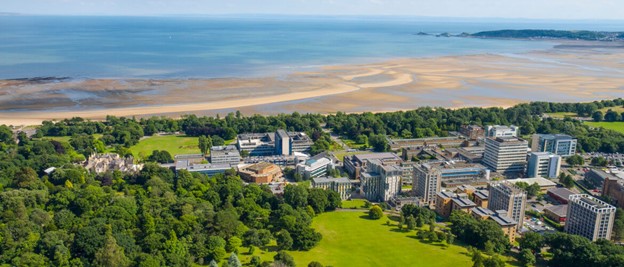

As with my base in Scotland at the University of Dundee (see the earlier mentioned “A Death on Copinsay”), Swansea would serve as my “home” in Wales. I would provide lectures at least once a term there, while also taking the three-and-a-half-hour train trip from London’s Paddington Station on other occasions to meet with colleagues.
However, unlike Dundee – where the location was important for my ongoing operation further north – Swansea was purely an academic extension for me. With the one exception described below.
It was one of those “you have been forewarned” missions. My instructions were to “get out to your place in Wales and deal with a situation our friends are stirring up.” An asset had conveyed the following to a station officer in London: “ The tovarishchi [comrades] are raising the dead on Gower. Lovecraft [i.e., H. P. Lovecraft, the gothic horror writer] would be proud.”
That at least piqued my interest.
The city of Swansea sits on the Bristol Channel directly north of Cornwall (itself jutting out into the Atlantic on the English southwestern coast). The entire area had been a dingy industrial center during the nineteenth century with some of the foulest environs to be found anywhere in the UK. It was at the time the country’s center for copper smelting and had a number of coal mines. When I traveled there forty years ago, you could still see the destruction approaching from the east (that is, from London).
The land reminded me of a picture from Poe’s The Fall of the House of Usher. Most trees were dead from the heavy arsenic concentrations leeching from the soil, a depressing byproduct of the copper processing.
But once the train would move over the ridge at the far eastern extent of Swansea, I would be greeted with a charming location by the water. Over the past several decades, much has been done to reclaim the outlying land. I was last there several years ago and found the more recently established Afan Forest Park to be spectacular.
It also does not hurt the local reputation that Catherine Zeta-Jones hails from Swansea.
While there, I would live in a charming residence owned by a friend some 12 miles southwest of the city on the spectacularly picturesque Gower peninsula. This would afford amazing views as I would drive past “The Mumbles” on the coast and move up into the surrounding hills. It also provided some of the oldest Celtic ruins to be found anywhere.


It is on Gower that this Spy Tale would be played out in a way that would make Vincent Price or Christopher Lee proud.
I would stay on each of my visits in Oxwich Green, up on the cliffs overlooking the water
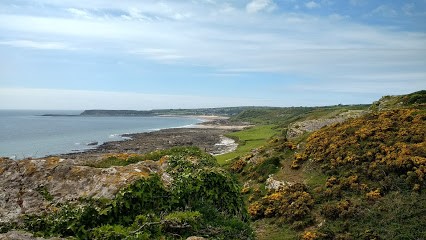

in one of the most charming villages to be found anywhere.
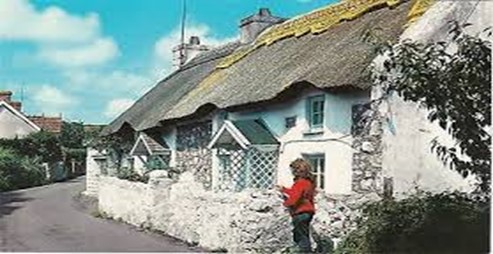

The neighborhood had its own fourteenth century castle ruins (attended to by the requisite ghosts):
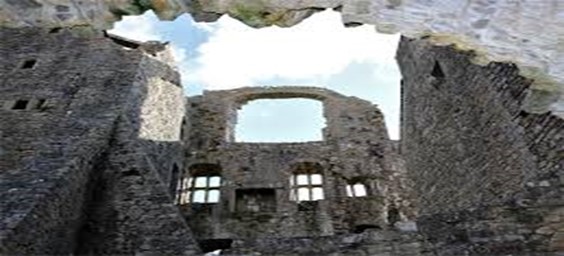

and one of the oldest Christian churches in all of the UK. This is the Church of St. Illtyd, a kilometer outside Oxwich. An even earlier Celtic church was on the site but had a wooden edifice build over it in the early half of the fifth century. Later in the twelfth century, the first version of the church currently standing was built.
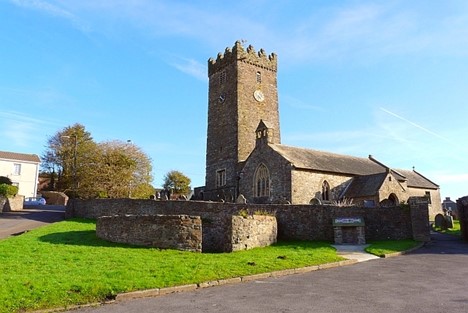

The oval “livestock close” in the photo foreground is the oldest part of the site and reminiscent of other Celtic structures discovered in the area.
Oxwich also had another interesting quirk. Despite its small population, it was the focus for a disproportionately large chapter of the CPGB. It took hold decades earlier once radical union leaders moved out of the decaying industry in Swansea and onto Gower.
That connection had nothing to do with why I ended up living there during my visits. But it would allow overhearing some interesting conversations in the local pubs I would frequent.
It is here that the opposition staged one of the more interesting and creepy usages of local custom to support an ongoing operation.
Celtic beliefs still permeate the traditional Welsh way of life. One of these would become for a time an interest for horror buffs. It is the bwytawr pechod…the “sin eater.”
This was an old practice, remaining in parts of Wales and the areas bordering with England until well into the nineteenth century. There were some sporadic claims of sightings as late as the 1920s. Gower was a particularly strong center for the custom and carried a heavy further element.
The normal rendition went something like this. Upon the death of a family member, a meal would be set up around the corpse and the local bwytawr pechod would be called. The sin eater would then eat the meal, often little more than unleavened bread and a flagon of bitter ale, absorbing in the process the sins of the departed so that the relative could enter the afterlife.
One pundit called it “the worst free-lance job in history.”
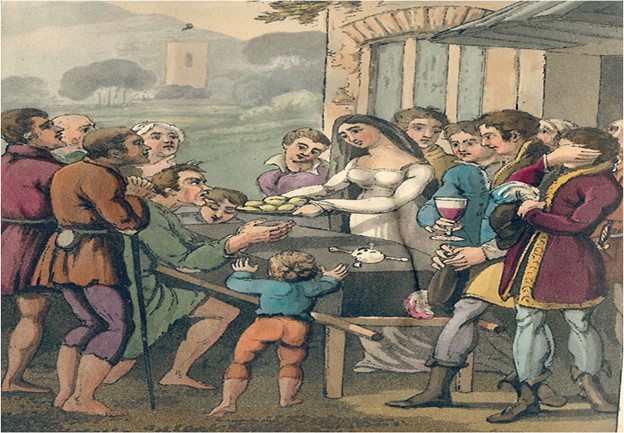

The bwytawr pechod in effect condemned his own soul to damnation so that others might be purified.
There were a number of local variations to what was a very old Celtic custom. The Gower version was one of the more sinister and troubling. It seems to have emerged from a brief local conflict between manor lords taking place in the late seventeenth century.
Here, at least according to the local tradition attested to while I was downing more than a few pints in one public house or other, corpses would be unearthed and “meals” placed upon them as indication the deceased were in hell and could be delivered only if the bwytawr pechod performed a (retroactive?) ritual. These were usually the dead of one’s enemies, symbolizing that they were the bad guys in whatever altercation was being played out. It was also a signal to the population at large of which families they needed to stay away from.
Well in 1979 no bodies were dug up. But loaves of unleavened bread and a cup of brew began showing up on flat burial stones in the environs of Oxwich, initially at the graves of former local political and social leaders. These centered about the Church of St. Illtyd (the first several appeared in the church’s cemetery), still considered by lifelong residents to be a direct connection to the Celts. The episodes were paralleled by stories of the tales associated with the practice showing up in local newspapers, followed by word-of-mouth forecasts of impeding doom because of the mess back in London.
These days, this would have gone viral quickly with an accelerating web of “hits” on social media. Back in 1979, pubs, bus queues, and office water coolers had to suffice.
The drama unfolded soon after the 1979 Welsh devolution referendum was announced. This would galvanize about South Wales in general and the Cardiff-Swansea-Gower track in particular. That is because six of the Labour MPs from the region, including the reps from Swansea, Gower and the immediate environs, opposed the devolution being proposed by their own party and government. That click was led by Neil Kinnock, later to become the Labour Party head.
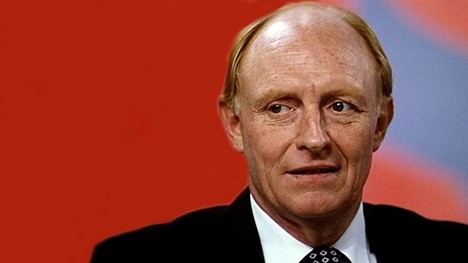

Politics had already fragmented Labour in Swansea and regional radicalized party members along with the CPGB stronghold on Gower were only too glad to divide it further. All that was needed was a rallying image from the past.
Somebody called on the bwytawr pechod to do his traditional duty.
I never found out anything of consequence but was nonetheless immersed in some fascinating local storytelling. I could dismiss the stories when the sun was out but would have a somewhat different personal reaction at night when the loud squalls would come off the sea, shaking my thatched Oxwich cottage.
The other side did not really gain anything from this exercise. But I had to hand it to them anyway. Somebody went to the library, did some research, and got interestingly creative if somewhat morbid.
And what became of the bwytawr pechod? There is an on again, off again annual music gathering called the “Sin Eaters’ Festival.” Everybody wears black in fine gothic ritual. The available menu, however, is of the fast-food variety.


This is an installment of Classified Intelligence Brief, your guide to what’s really happening behind the headlines… and how to profit from it. Dr. Kent Moors served the United States for 30 years as one of the most highly decorated intelligence operatives alive today (including THREE Presidential commendations).
After moving through the inner circles of royalty, oligarchs, billionaires, and the uber-rich, he discovered some of the most important secrets regarding finance, geo-politics, and business. As a result, he built one of the most impressive rolodexes in the world. His insights and network of contacts took him from a Vietnam veteran to becoming one of the globe’s most sought after consultants, with clients including six of the largest energy companies and the United States government.
Now, Dr. Moors is sharing his proprietary research every week… knowledge filtered through his decades as an internationally recognized professor and scholar, intelligence operative, business consultant, investor, and geo-political “troubleshooter.” This publication is designed to give you an insider’s view of what is really happening on the geo-political stage.
You can sign up for FREE to Classified Intelligence Brief and begin receiving insights from Dr. Moors and his team immediately.
Just click here – https://classifiedintelligencebrief.com/






